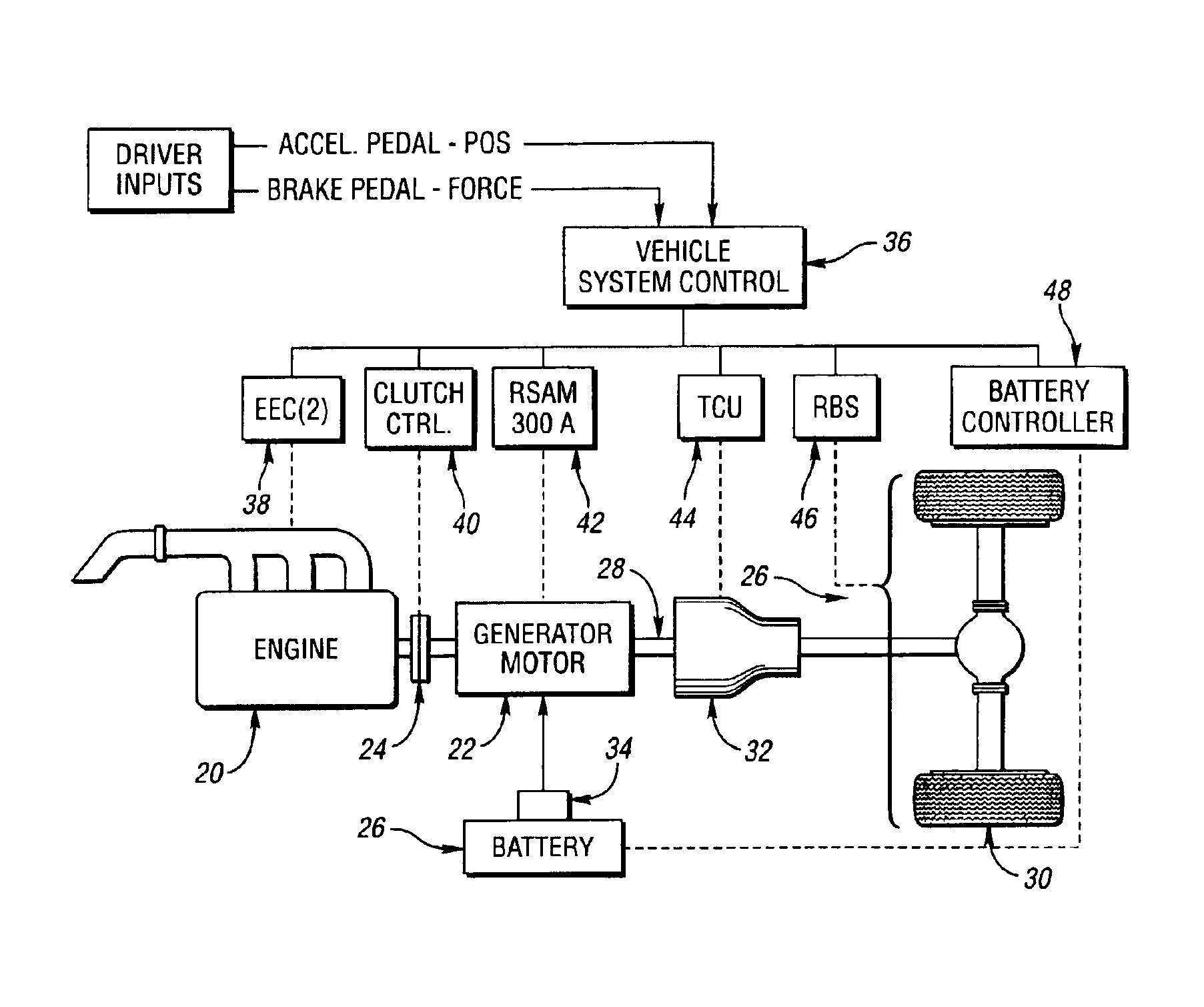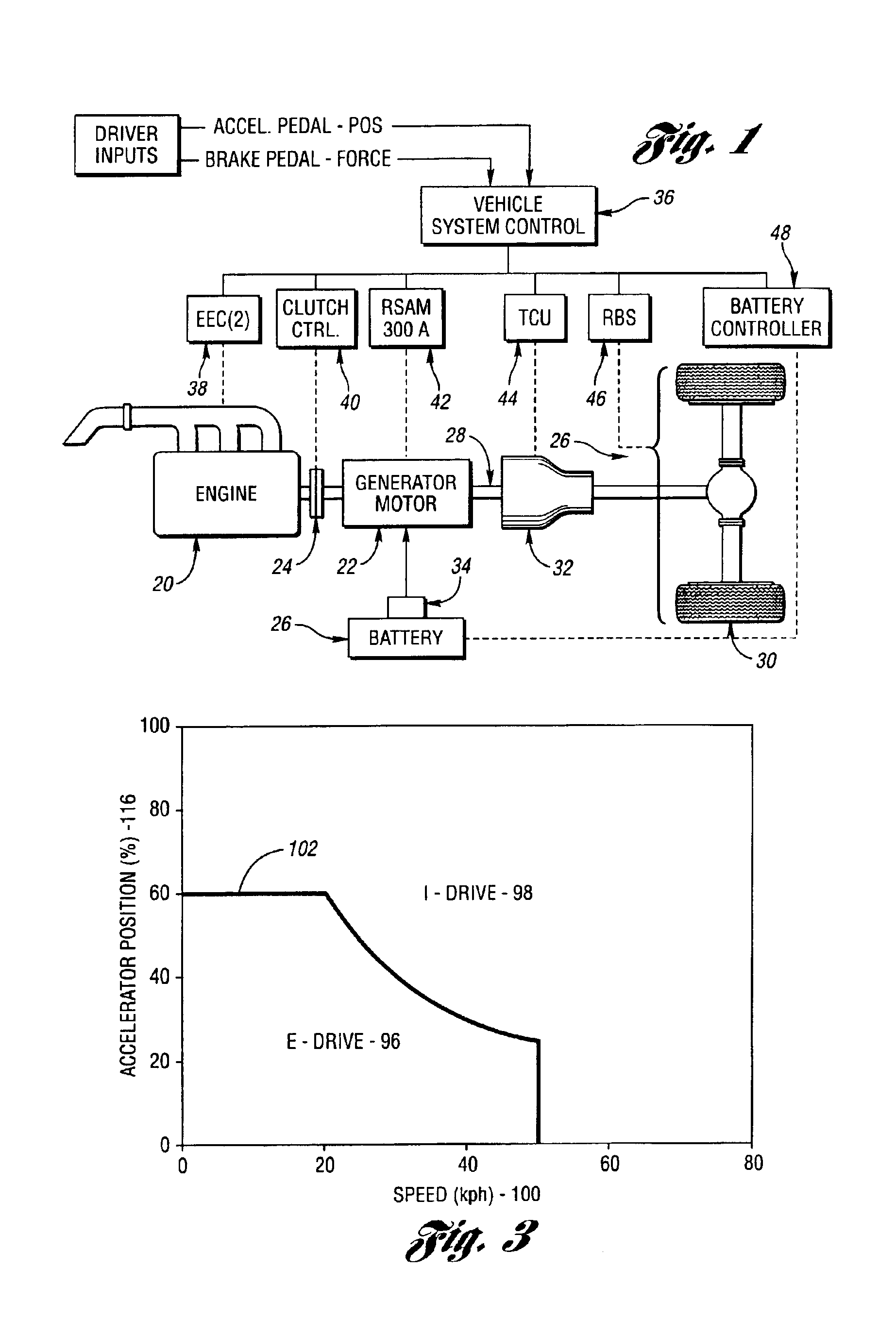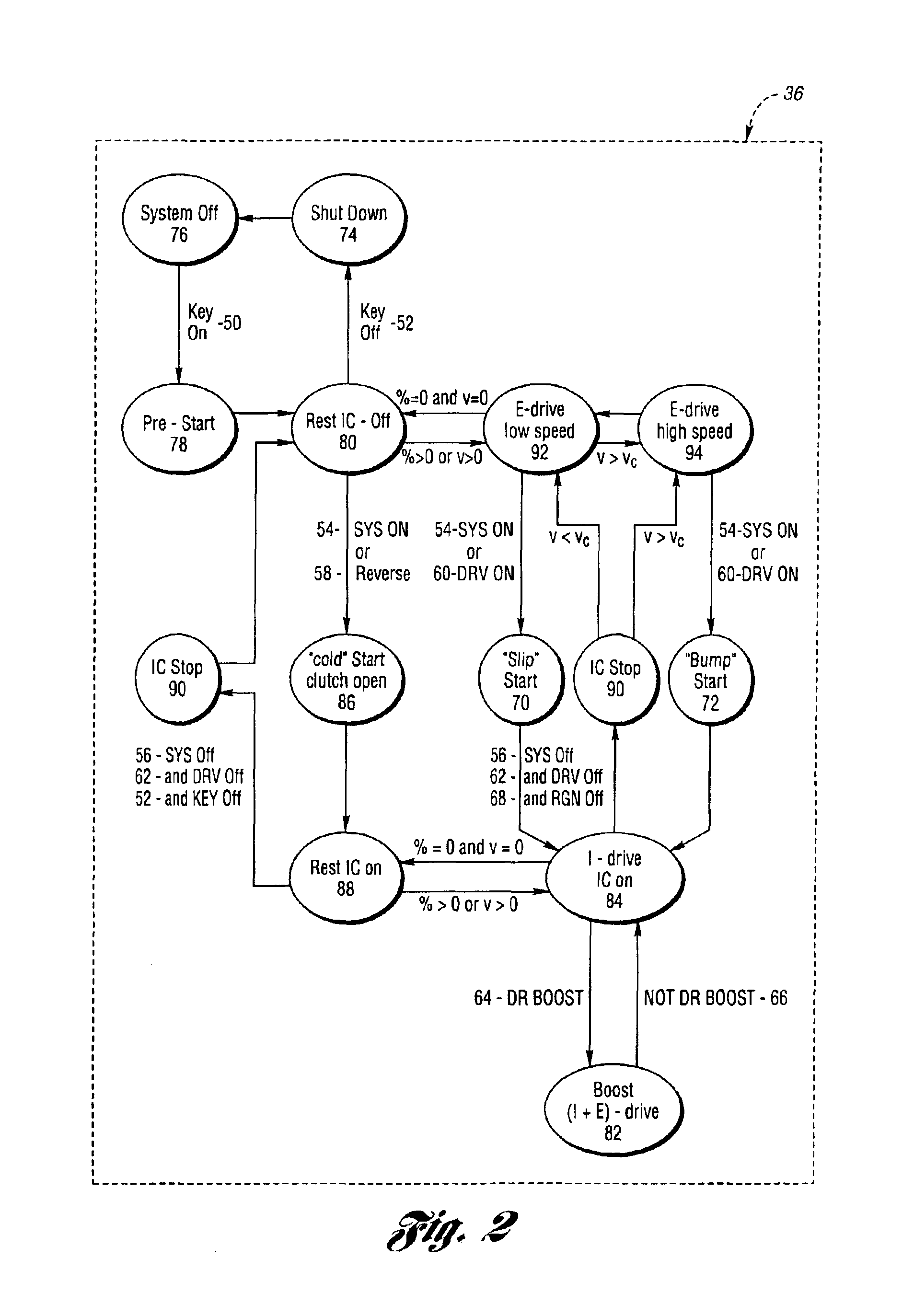Control system for a hybrid electric vehicle to anticipate the need for a mode change
a control system and electric vehicle technology, applied in the direction of electric propulsion mounting, transportation and packaging, mechanical equipment, etc., can solve the problems of frequent engine start and stop, limited power capacity, and limited operating range of electric vehicles, so as to improve drivability and efficiency
- Summary
- Abstract
- Description
- Claims
- Application Information
AI Technical Summary
Benefits of technology
Problems solved by technology
Method used
Image
Examples
Embodiment Construction
[0033]Although the embodiment of the invention described is a parallel HEV, the invention could be applied to other HEV configurations.
[0034]FIG. 1 shows general components of a pre-transmission parallel HEV powertrain with an engine disconnect clutch. This pre-transmission configuration is described in U.S. patent application Ser. No. 10 / 225,824, filed Aug. 22, 2002, now U.S. Pat. No. 6,746,366. U.S. patent application Ser. No. 10 / 225,824 is a continuation-in-part of U.S. application Ser. No. 09 / 686,471, filed Oct. 11, 2000, now abandoned. These applications and U.S. Pat. No. 6,746366 are assigned to the assignee of the present invention. An engine 20 is linked to an electric motor / generator 22 via a disconnect clutch 24. A battery 26 is connected to the motor / generator 22 via an inverter 34, which controls the flow of electrical power to and from the two components. The motor / generator 22, which may be referred to as a drive unit, is connected to a power transfer device 28, such a...
PUM
 Login to View More
Login to View More Abstract
Description
Claims
Application Information
 Login to View More
Login to View More - R&D
- Intellectual Property
- Life Sciences
- Materials
- Tech Scout
- Unparalleled Data Quality
- Higher Quality Content
- 60% Fewer Hallucinations
Browse by: Latest US Patents, China's latest patents, Technical Efficacy Thesaurus, Application Domain, Technology Topic, Popular Technical Reports.
© 2025 PatSnap. All rights reserved.Legal|Privacy policy|Modern Slavery Act Transparency Statement|Sitemap|About US| Contact US: help@patsnap.com



